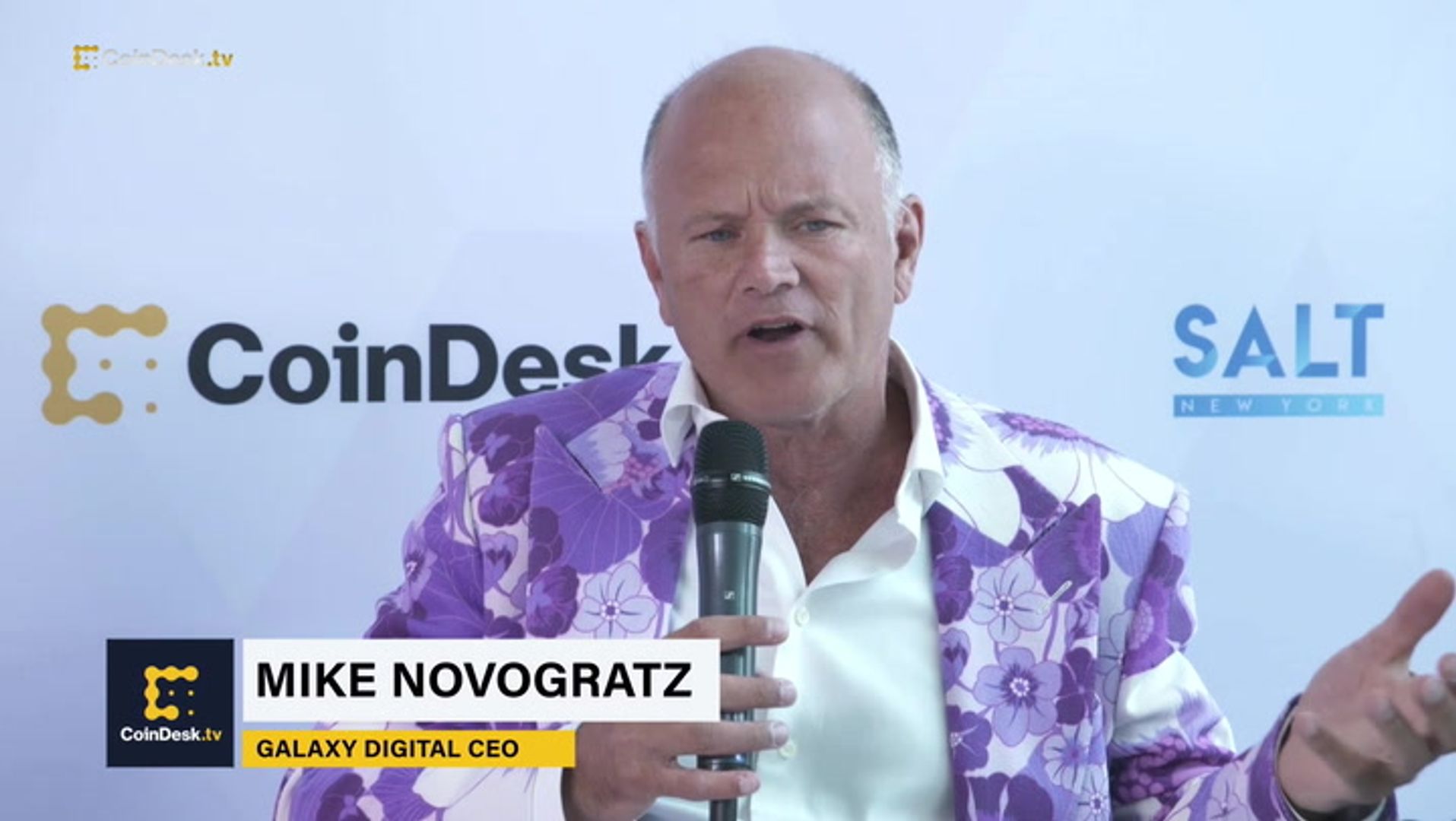Uncategorized
Bitcoin Soars to Record High Above $106K, Then Retreats as Hawkish Fed Rate Cut Looms

Bitcoin (BTC) surged to over $106,000 in early Asian hours, setting new all-time highs before quickly retreating to $104,500 amid concerns about the upcoming U.S. Federal Reserve (Fed) rate cut.
The U.S. central bank is expected to reduce the benchmark borrowing cost by 25 basis points to the 4.25% to 4.5% range, marking a total easing of 100 basis points since September. However, there are concerns that the accompanying Fed commentary will seek to temper expectations for further easing, potentially diminishing the bullish impact of the rate cut.
The Fed will announce its rate decision, the dot plot, comprising interest rate projections, and economic forecasts on Dec. 18 at 14:00 ET. A press conference by the Fed Chair Jerome Powell will occur a half hour later.
The previous dot plot released on Sept. 18 showed 2.5 points of rate cuts by the end of 2026, pushing the borrowing cost below 3%. Some observers believe the Fed will trim these forecasts on Wednesday.
«We suggest the risk of a ‘hawkish’ cut with less rate hikes next year than anticipated in September in the Summary of Economic Projections (dot plot), recognition that economy is stronger than it had expected previously, and inflation is on a bumpy path that allows the Fed to be patient,» Marc Chandler, chief market strategist at Bannockburn Global Forex, said in Sunday’s edition of the newsletter.
If the projections reflect slower or fewer rate cuts, Treasury yields and the dollar will likely extend their recent run higher, potentially making it harder for risk assets, including BTC, to stay as strongly bid as they have been of late.
That said, seasonality is quite bullish for BTC, and with President-elect Trump sending positive regulatory vibes to crypto, a potential hawkish Fed may not have a long-lasting impact on the cryptocurrency.
Besides, the Fed rate cuts will still remain on the table alongside an expected easing from China, keeping BTC’s bull case intact.
«Yet, whilst lots of ink will be spilled on the pace of cuts going forward, little detracts from the supportive macro dynamic of a global central bank rate cutting cycle and rising global liquidity, set to be propelled by China,» founders of the newsletter service LondonCryptoClub said.
Later this week, markets will get the latest core PCE reading, the Fed’s preferred inflation gauge, which will reveal whether the recent upticks in consumer price inflation are a fluke or hints of a genuine inflation rebound.
Uncategorized
Mike Novogratz’s Galaxy Digital Swaps $100M ETH for SOL, On-Chain Data Shows

Mike Novogratz’s Galaxy Digital has apparently swapped $100 million worth of ether (ETH) for solana’s SOL.
According to Wu Blockchain, on-chain data suggests that Galaxy has swapped out a considerable amount of its ETH holdings for SOL. Over the last two weeks, Galaxy has transferred 65,600 ETH – or about $105 million – to Binance and has withdrawn 752,240 SOL (approximately $98.37 million).
Galaxy may have made the move because ETH continues to be in «structural decline» according to a recent note from Standard Chartered, which slashed its year-end target price for the asset.
Data from an Arkham dashboard shows that the firm holds $87.9 million ETH versus $23.86 million SOL.
Galaxy did not immediately return a request for comment from CoinDesk.
Market data shows that in the last month, SOL is up 8% while ETH is down nearly 20%.

Standard Chartered estimated in its note that Base has cut $50 billion from its market cap, but also argued that tokenized real-world assets could help stabilize Ethereum.
Many blockchain metrics would support Standard Chartered’s thesis, as transactions on Solana have rocketed past Ethereum in the last three months.

A Dune dashboard shows that decentralized exchange (DEX) volume on Solana has moved past $500 billion in the last three months, while DEX volume on Ethereum is less than $400 billion. Active addresses on Solana are over 220 million while Ethereum and Ethereum Layer-2 addresses are just over 80 million.
One idea, first proposed by Tron’s Justin Sun, to reverse this «structural decline» of Ethereum has been a tax on Layer-2s.
«All collected taxes will be used to repurchase ETH and burn it in a fully decentralized manner,» he wrote on X. This idea, however, hasn’t been formalized into an Ethereum Improvement Proposal (EIP) which would be the first step in it becoming reality.
Meanwhile, flow data from the Ether ETFs shows that investors moved nearly $600 million out of these listed products over the last two months.
Uncategorized
U.S. Derivatives Watchdog Weighs 24/7 Action With Crypto Oversight on Horizon

Bitcoin is the crypto sector’s top asset and is also universally defined by U.S. regulators and courts as a commodity, putting it under the jurisdiction of the Commodity Futures Trading Commission. That agency is now seeking public comments on whether it should open the wider world of derivatives to around-the-clock trading, as already executed for bitcoin and other digital assets.
Though the CFTC is expected to be established as a crypto market regulator in Congress’ ongoing effort to establish industry rules, the agency’s invitation for comments issued on Monday doesn’t explicitly discuss digital assets oversight. The request notes that «technological advancements and market demand» are pushing CFTC-regulated firms toward being able to handle transactions at all times.
“As I have long said, the CFTC must take a forward-looking approach to shifts in market structure to ensure our markets remain vibrant and resilient while protecting all participants,” said Acting Chairman Caroline Pham, in a statement. She was tapped by President Donald Trump to run the agency while it awaits the Senate confirmation of its chairman nominee, Brian Quintenz.
Trading without downtime presents a host of challenges for U.S. markets unaccustomed to it, according to the request, including «what governance frameworks, exchange staffing models and technologies would be necessary to ensure market integrity and operational resilience, as well as compliance with all core principles, under a continuous trading model.» Such an expansion would require firms to handle live maintenance and technology patches and human monitoring of the systems and markets during the extended hours, which are issues already long wrestled with by digital assets operations.
The CFTC would still need a change in law before it could have direct authority over actual spot-market trading of bitcoin and other tokens that aren’t eventually categorized as securities, which would get Securities and Exchange Commission oversight. If the agency is ultimately a major regulator of trading and of the platforms and firms that handle customers’ transactions, that’s a space in which 24-hour, seven-days-a-week activity is already the model.
Uncategorized
Can Bitcoin Benefit From Trump Firing Powell? Turkey’s Lira Crisis May Provide Clues

The week has begun on an interesting note, with the U.S. dollar crashing to three-year lows alongside losses on Wall Street, yet bitcoin, which usually follows the sentiment on Wall Street, stands tall.
This could just be the beginning.
The shift away from the USD and toward seizure and censorship-resistant assets like BTC and stablecoins could accelerate if President Donald Trump follows through with his reported plans to fire Federal Reserve Chairman Jerome Powell, which have pushed the DXY and U.S. stock markets lower today.
That’s the lesson from Turkey, which has seen its currency, the lira (TRY), collapse over the years mainly due to President Recep Tayyip Erdogan’s repeated interference in the central bank’s operations. The sliding lira has triggered a capital flight into BTC and stablecoins since at least 2020-21.
Trump’s issues with the Fed
Trump has feuded publicly with the Federal Reserve and its chairman, Jerome Powell, for years, criticizing Powell for being too late on rate cuts even during his first term when interest rates were way lower than today.
However, Trump’s criticism has recently reached a fever pitch with reports suggesting he is looking for ways to get rid of Powell, who recently warned of stagflation even as the President reiterated calls for lower borrowing costs while suggesting there is no inflation.
Powell’s patient approach follows a trade war-led spike in survey-based measures of inflation expectations, which could always become self-fulfilling.
Still, on Monday, Trump went further, calling Powell a «major loser» and warning that the economy could slow down unless interest rates are immediately lowered.
Lesson From Turkey
Erdogan began interfering in the central bank’s operations in 2019, and since then, the lira has collapsed sevenfold from 5.3 per dollar to 38 per dollar.
It all started with Turkey’s inflation rate reaching double digits in 2017. It remained elevated in the subsequent year, which prompted the country’s central bank to increase the one-week repo rate from 17.5% to 24% in September 2018.
The move likely didn’t go well with Erodgan, who issued the first decree dismissing Central Bank of Turkey (CBT) governor Murat Cetinkaya in July 2019. From then on until the end of 2021, Erdogan issued multiple decrees dismissing and hiring several CBT officials. Amid all this, inflation remained elevated, and the lira continued to depreciate at an alarming rate.
«We certainly don’t believe in high interest rates. We will pull down inflation and exchange rates with low-rate policy … High rates make the rich richer, the poor poorer. We won’t let that happen,» Erdogan said in 2021.
As of 2025, Turkey faces an inflation rate of nearly 40%, according to data source TradingEconomics.
This episode serves as a cautionary tale for Trump, highlighting that tampering with central bank independence — especially in the face of looming inflation — can erode investor confidence and send the domestic currency into a tailspin.
This does not necessarily mean that the USD will crash exactly like lira but may see significant devaluation.
Perhaps it could prove even more destabilizing for global markets, considering the dollar is a global reserve currency, and the U.S. Treasury market is the bedrock for international finance.
If better sense fails to prevail, U.S. investors may feel incentivized to move away from U.S. assets and into BTC and other alternative investments, just as Turks did.
-

 Fashion6 месяцев ago
Fashion6 месяцев agoThese \’90s fashion trends are making a comeback in 2017
-

 Entertainment6 месяцев ago
Entertainment6 месяцев agoThe final 6 \’Game of Thrones\’ episodes might feel like a full season
-

 Fashion6 месяцев ago
Fashion6 месяцев agoAccording to Dior Couture, this taboo fashion accessory is back
-

 Entertainment6 месяцев ago
Entertainment6 месяцев agoThe old and New Edition cast comes together to perform
-

 Sports6 месяцев ago
Sports6 месяцев agoPhillies\’ Aaron Altherr makes mind-boggling barehanded play
-

 Business6 месяцев ago
Business6 месяцев agoUber and Lyft are finally available in all of New York State
-

 Entertainment6 месяцев ago
Entertainment6 месяцев agoDisney\’s live-action Aladdin finally finds its stars
-

 Sports6 месяцев ago
Sports6 месяцев agoSteph Curry finally got the contract he deserves from the Warriors





